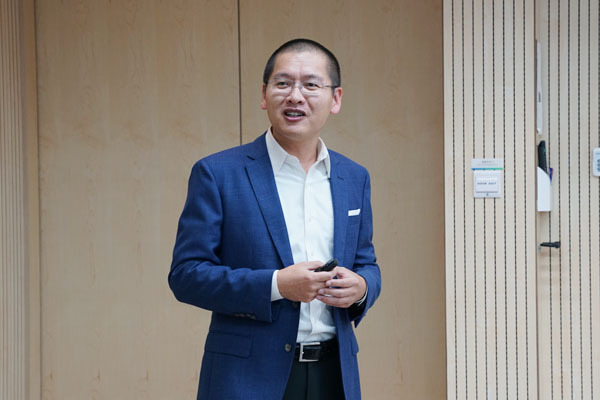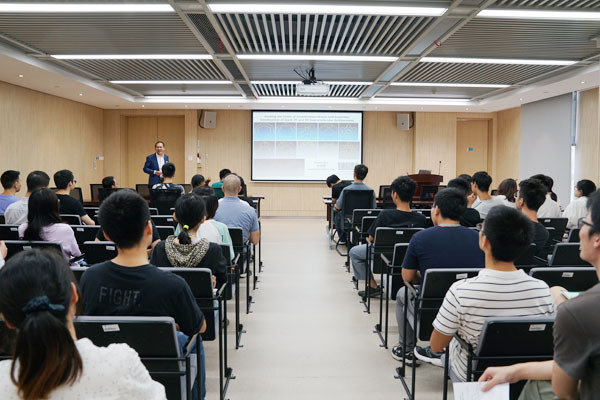

On October 15th, Prof. Xiaopeng Li from University of South Florida visited AISMST and gave a lecture themed Pushing the Limits of Coordination-Driven Self-Assembly: Construction of Giant 2D and 3D Supramolecular Architectures.
Due to its highly directional and predictable feature, coordination-driven self-assembly has evolved into a well-established methodology for constructing 2D and 3D supramolecules. Up to date, this field has matured in the context of a large variety of macrocycles and polyhedra, which however, still suffered from a lack of complexity and thus were unable to reach the high degrees of functionality found in natural systems. With the goal of assembling structures with high complexity, his group pushed the limits of coordination self-assembly through constructing a series of giant 2D and 3D supramolecular architectures.
Prof. Li shared their recent process and findings in this field. First, multi-armed building blocks were synthesized using pyrylium and pyridinium salts chemistry for the self-assembly of 2D nested concentric hexagons, or Kandinsky circles, which showed high antimicrobial activity. Second, step-wise strategy was utilized to combine folding and self-assembly together to construct fuzzy supramolecular hexagonal grids (diameter > 20 nm, MW > 65 kDa) with intrinsically ordered and disordered domains. Third, pre-assembled supramolecular polyhedra with precisely-controlled shapes and sizes could further assemble into double-helical nanowires with a non-natural parastichy pattern. In conclusion, through further understanding of self-assembly of supramolecules, our research could advance the design, synthesis and self-assembly of new synthetic materials with molecular level precision.
